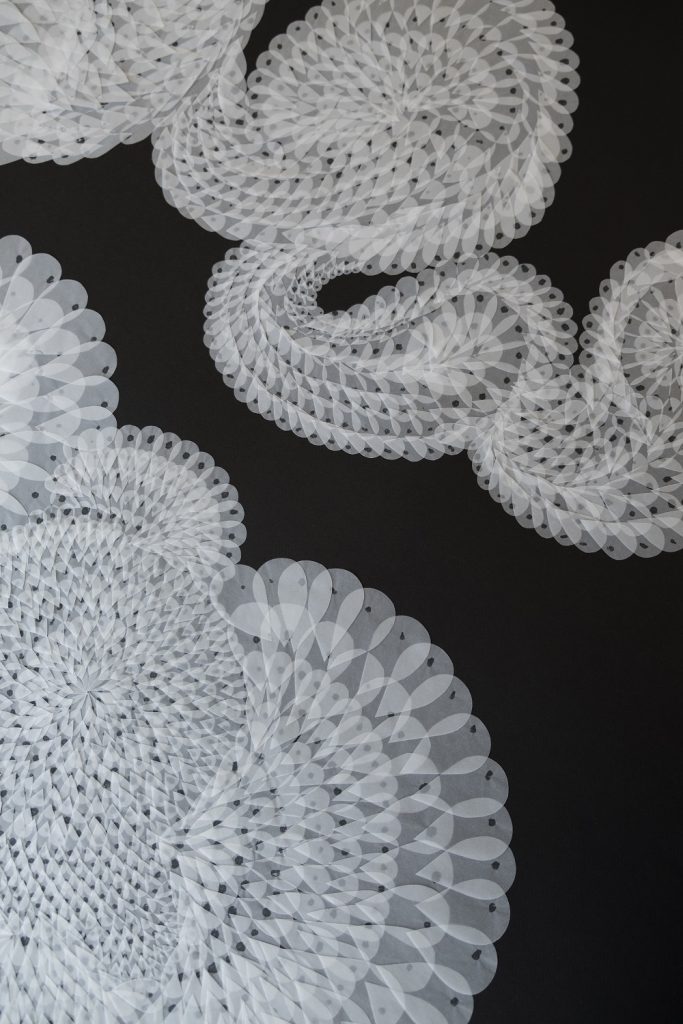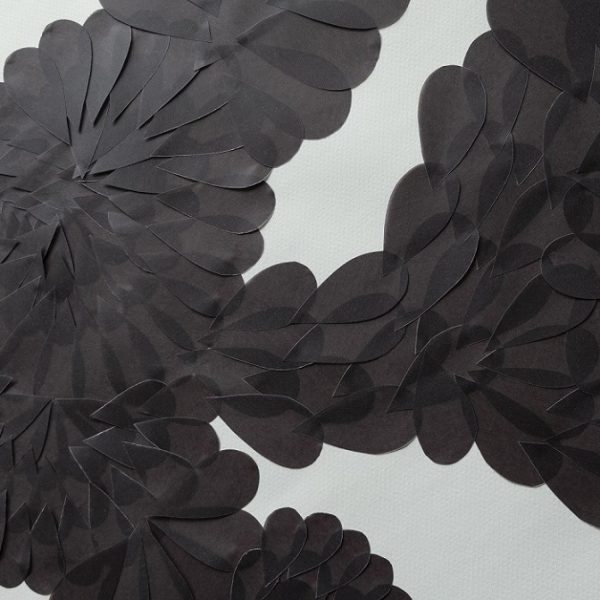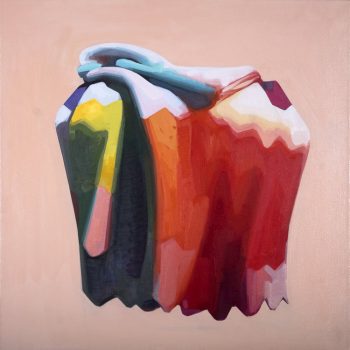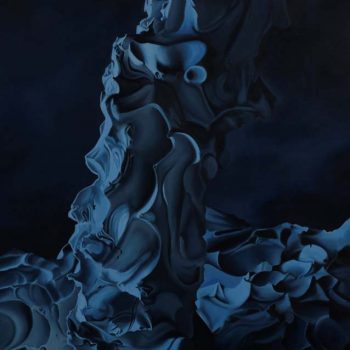Cartograms forms part of the Paper Weight exhibition at Jordan Schnitzer Gallery Seattle until January 20 2019
Growing up poor taught me a series of important lessons that I will always treasure. I learned that the most precious possession you have is your mind
Elsa Mora’s oeuvre is characterized by work in paper which takes multifarious forms: as a group of works, Paper Weight exhibits innumerable underlying processes to enable completion of them; her work is inspired by
…the six cognitive faculties that form the mind: consciousness, perception, thinking, language, judgment, and memory.
Within Paper Weight this complexity is habitually and thematically aligned to the ways in which the above attributes are brought into play when negotiating or appreciating the world we live in.
 Cartograms is described as being about memory
Cartograms is described as being about memory
…In dealing with memory, we all build unique mental patterns, and that’s what I wanted to work within this series. Another aspect that I wanted to touch was that recurring process of getting lost in our mind through a sequence of thoughts/memories that connect with one another.
Formally a cartogram is a diagrammatic presentation in highly abstracted or simplified form, commonly of statistical data, on a map base or distorted map base.
Three things come to mind when considering Cartograms, firstly the means by which the manifold forms are arrived at is painstaking; this factor is especially relevant in light of the mellifluous, three dimensional elements. Secondly, the manner in which the placement of the diminutive tear-drop slices symbolise in an exclusive way, connectivity which is analogous to the domino effect of memories. The dimensional diversity, incremental and continuous layers point to the never-ending revolution and singularity of stored memories.
Thirdly, while there is little spontaneity in the repetitive alignment of each small piece on the way to the greater whole,
viewed remotely the larger configurations have an undeniable quality of spontaneity.
The configurations in Cartograms repeat in larger or smaller whorls in slightly altered forms. This occurs in a way not unlike memories or daydreams merging one-into-the-other while directions change and cohere in a never-ending cycle. Not only is there an implication of memories unfurling in the intimate connections or linkages, but the sense of being lost in time is signified in the quasi-autonomous way the forms shift direction but also in the possibility of falling into a deep reverie as the work is executed; additionally, the random forms connote infinity.
The above qualities enhance a strong innate and formal lyricism within the coiling, layered patterns. Whilst keeping in mind that personal meaning is located within particular experience, it is possible to view these lilting forms as diagrammatic impressions of memory consecutions or indeed, dance sequences to music.
 Given Mora’s connection to Cuba and as a consequence Spain, when considered in the abstract, the sequence of flamenco movements have a similar coiling, revolving and, particularly in the wrist rotations, a three dimensional quality in space.
Given Mora’s connection to Cuba and as a consequence Spain, when considered in the abstract, the sequence of flamenco movements have a similar coiling, revolving and, particularly in the wrist rotations, a three dimensional quality in space.
With reference to the Cuban guajiras, (a genre made popular in the 20th century by Cuban singer-songwriter Guillermo Portabales) a female dance traditionally, the dancer will often use an albanico pericón (a large Spanish fan). Cartograms contain similar fan-like forms.
The inimitable and rhythmical arrangements of the guajiras flamenco are typically accompanied by holding and twirling of both the fan and the skirt as well as both knee projections and half-rotations.
Moreover, some of the great flamenco dancers, like Irene Roderiguez or Cristina Hoyos to name two, are adept to the point that the intricate wrist rotations appear decidedly three dimensional. The exquisitely elaborate dance convolutions align conceptually to a feeling of spontaneity and the circular patterns of Cartograms.
Conspicuously, any dance sequence involves memory, however, supreme interpreters, such as Hoyos and Roderiguez make each performance uniquely their own. Each set is at once intuitive and different and informed by their singular social and cultural memory in connection with a deep well of dance memory; convention is revolutionised in order to come up with original choreography. Not unlike Mora’s developing oeuvre.
They become lost in their own world of
…recurring process…through a sequence of thoughts/memories that connect with one another.
 In a trance-like spontaneity, the dancers enact worlds of infinite consecutive actions.
In a trance-like spontaneity, the dancers enact worlds of infinite consecutive actions.
Similarly, the artist has created in Cartograms, the recurring and revolving patterns of sequential intricacy and beauty, qualities which derive from the groomed mind of the artist which is heavily reliant on memory.
It is difficult to see Cartograms as anything but positive and life-affirming in the entrenched lyricism inherent to them. That process usually ends up somewhere far from where we started. While this comment referentially and conceptually links to all series and elements in Paper Weight, it is especially relevant to Cartograms. As previously mentioned, although the process of making each of the discrete pieces is not spontaneous, the final expression of forms, appear spontaneous and imply a trance-like process.
Overwhelmingly, the group of works in Paper Weight are affirmations of hope. While they are atypical and painstaking, they are also delicate, alluring and fragile. Much of Mora’s life and the circuitous routes her life has taken as a Mother, artist, wife and director have helped her to a greater understanding of the world she inhabits.
Paper Weight is indicative of a stimulating and ambitious part of Mora’s journey; while universally journeys take many forms they all constitute a search for identity, connection and survival.








































